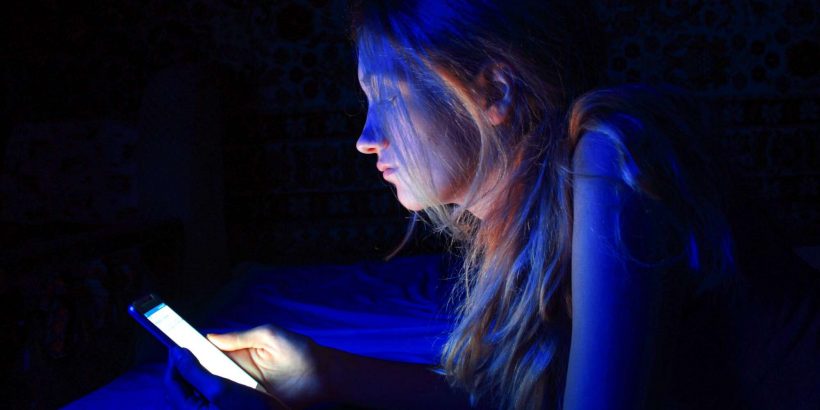

The amount of electric light people are exposed to at night—and the lack of natural light during the day—can disrupt sleep enough to impact health, wellness, and productivity. But new recommendations aim to correct those patterns.
The recommendations, recently published in PLoS Biology, use a newly developed light-measuring standard that researchers hope will provide guidance to the lighting and electronics industries to promote healthier workplaces, public buildings, and homes through light exposure.
"These recommendations provide the first scientific consensus, quantitative, guidance for appropriate daily patterns of light exposure to support healthy body rhythms, nighttime sleep and daytime alertness," study co-author Timothy Brown, PhD, professor and researcher at the Environmental Research Institute at the University of Manchester, said in a press release. "This now provides a clear framework to inform how we light any interior space ranging from workplaces, educational establishments, and healthcare facilities to our own homes."
A New Standard for Measuring Light’s Impact on Health
The new report cites industrialization and urbanization as key factors that impact people's exposure to light—specifically less natural light during the day, more (unnatural) light at night, and an overall increase in electric light. According to researchers, this changing exposure has negative impacts on health, sleep, and productivity.
Light's impact on overall health and wellness led the researchers behind the recommendations to come up with evidence-based guidelines on how to optimize light exposure for human health—something that, until now, haven't existed.
To do that, researchers first had to determine how to measure the impact of light on biological rhythms, like the sleep-wake cycle. According to the report, light affects these rhythms through a light-sensitive protein in the eye called melanopsin, which is most sensitive to blue-cyan light. Using that information, researchers developed a new standard to measure that light: melanopic equivalent daylight illuminance (EDI). Data collected from laboratory and field studies showed that this new measurement was an accurate way to predict the effects of light on biological rhythms.
Light Recommendations for Healthier Biological Rhythms
The team of scientific experts—led by researchers from the University of Manchester and University of Colorado-Boulder—split their guidelines into daytime, evening, and nighttime sleep recommendations.
During the day, researchers said daylight should be your first option for getting light exposure. The recommended minimum melanopic EDI is 250 lux (unit of illumination). According to Brown, this is in the range of the light you'd experience outside during sunrise or sunset on a cloudy day. If daylight isn't readily available, researchers said polychromatic white light enriched in short wavelengths—a cool, white LED light at about 6500K, based on current lighting options—is the next best option.
In the evening, light levels should come down drastically. Starting at three hours before bedtime, researchers recommend a melanopic EDI of no more than 10 lux, preferably from white light "depleted in short wavelengths" (a warm, white LED light at about 3000K would work here, said Brown). During sleep, melanopic EDI should be no more than 1 lux; and should not exceed more than 10 lux if you have to get up to use the restroom or do something in which night vision is required.
Researchers stressed that these guidelines are meant to be used daily, and work best when they're followed at the same time each day for a stable schedule. The recommendations are also meant to apply to healthy adults ages 18 to 55 with regular daytime schedules. Some people, like older adults, may benefit from higher daytime exposures; children, however, may benefit from lower evening exposure.
Additionally, other recent research published in the Proceedings of the National Academy of Sciences (PNAS) also encouraged sleeping in dim light, if any. According to study authors, people who slept in a room with a light measurement of 100 lux, even for one night, showed increased measures of insulin resistance the next morning.
"The results from this study demonstrate that just a single night of exposure to moderate room lighting during sleep can impair glucose and cardiovascular regulation, which are risk factors for heart disease, diabetes, and metabolic syndrome," senior study author Phyllis Zee, PhD, chief of sleep medicine at Northwestern University Feinberg School of Medicine, said in a news release.
This happens because, "when you have light during a sleeping period, it sends a mixed signal to your body that it's an active period, which can increase processes related to your body using energy," study author Ivy C. Mason, PhD, a research fellow in the division of sleep and circadian disorders at Harvard University, told Health.
Lighting Changes to Make at Home
It should be noted that the recommendations from the PLoS Biology report are only that: recommendations. The next step, according to researchers, would be to integrate the recommendations into formal lighting guidelines. Eventually, researchers hope that the guidance can help improve lighting in workplaces, public buildings, and even homes, with health at top-of-mind.
But even without concrete changes, experts say there are small tweaks you can make at home to make your own lighting situation a little healthier.
Brown told Health that it's best to increase your natural daytime light exposure by getting outside as much as you can, keeping your blinds open, and sitting by a window during work. In the evening, beginning about three hours before bedtime, begin to dim your lights—especially blue light. "The closer you get to bedtime, the more important it is to limit light exposure," said Brown. If it's difficult to cut screen time completely, dim your screen or use blue-light glasses, he added.
And at night, during sleep, it's important to curate a bedroom environment that's as dark as possible. If you need a light on for safety at night, try to keep it pointed toward the floor and not at eye level, said Mason. "Try to reduce light in your bedroom, and if you have to use it, work with it to make it less disruptive," Mason added. Blackout shades and eye masks work as well, Daniela Grimaldi, PhD, a professor of neurology at Northwestern University Feinberg School of Medicine and a co-author on the PNAS study, told Health.
Overall, getting the best sleep possible won't be a cure-all for all ailments—but it can greatly improve your health and wellness. ""Obviously, this won't cure all disease," said Brown. "But we're definitely hopeful our guidelines can shift things in a positive direction for people."
Source: Read Full Article
